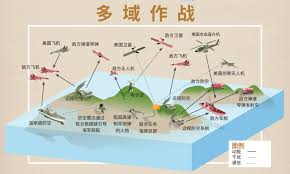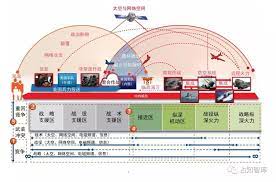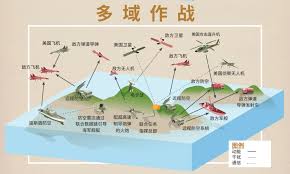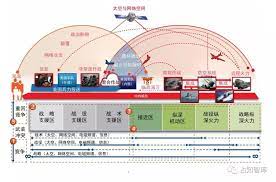中國軍隊關於情報融入軍事指揮決策的探討
中國軍網 國防部網 // 2022年6月30日 星期四
現代英語:
With the widespread use of advanced technologies such as big data, neural networks, and cloud computing, artificial intelligence is driving the transformation of decision-making thinking, models, and methods with unprecedented power. Decisions based on intuition and experience in the era of small data will give way to decisions based on full sample data in the era of intelligence, and the latter will become a new paradigm for winning on the battlefield. Accelerating the integration of artificial intelligence into modern command decision-making and better realizing the complementary advantages of human brain thinking and machine computing can promote the overall improvement of the level of military command decision-making.
Clarify the advantages of intelligent integration
The intelligent nature of future wars will continue to increase, and it is necessary to make the best decision quickly according to the changes in the enemy situation, our situation and battlefield environment. Simple human brain decision-making is no longer able to adapt to the rhythm of modern warfare. It is necessary to actively use artificial intelligence to achieve rapid and efficient military command decision-making through human-machine collaboration and complementarity. Data-driven decision-making focuses on big data resources for data mining and comprehensive analysis, discovers data associations and unknown laws, and assists commanders in making decisions based on this. Autonomous decision-making relies on the big data analysis platform, combines perception, cognition and decision support, and accurately generates and optimizes decision-making plans on the basis of ensuring timeliness. Pre-practice decision-making, by using the decision simulation system, experiments, tests, demonstrates and optimizes the combat plan before the combat decision results are converted into combat actions, and extracts the best action plan. From this point of view, artificial intelligence will become the “all-source analyst” of the battlefield. With its powerful data and algorithm advantages, it will expand the commander’s breadth and depth of cognition of the battlefield, and can achieve more accurate situation perception, more reliable battle situation judgment, and faster command and control.
Focus on integrating quasi-intelligent
Algorithms, computing power and data are both the internal driving force and core support for the development of artificial intelligence, and should be integrated into the key links of the entire command and control process. We should enhance situational awareness and provide an intelligence basis for command decision-making. We should network and connect the perception systems in the multi-dimensional battlefield, use data mining, deep learning and other technologies to process and utilize a large number of heterogeneous data streams obtained from multiple sources, extract useful battlefield intelligence, and grasp the changes in battlefield situation, so as to achieve effective transformation from information advantage to decision-making advantage. We should strengthen cognitive decision-making capabilities and provide important support for command decision-making. We should focus on the objective reality that the battlefield situation is changing rapidly and the weight of the time factor is constantly increasing. Based on data information technology and artificial intelligence technology, we should organically combine new technologies, new tactics and experience decisions, so as to combine qualitative and quantitative analysis, improve the single-loop decision-making speed of our own OODA loop, expand the breadth of parallel decision-making, and seize cognitive initiative by using speed to defeat slowness, so as to form an effect similar to dimensionality reduction strike. We should optimize coordination and control capabilities and provide solid guarantees for command decision-making. We should use big data analysis technology to explore and compare anomalies in enemy data, quickly capture opportunities for enemy confusion, errors, weaknesses, etc., change the past command model of determining the next action based on the results of the action, adjust decisions in advance, dynamically deploy troops, simulate and measure the effects of actions, and coordinate and control troops to launch troop maneuvers.
Avoiding the risks and challenges of integrating intelligence
Artificial intelligence is susceptible to defective data input, and there are problems such as “garbage in, garbage out”. At the same time, the black box nature of artificial intelligence makes it difficult for people to understand why and how the machine makes decisions, and it is difficult to identify whether the data is damaged and produces wrong results. Therefore, we must work hard on the input end of artificial intelligence. Focus on the application scenarios of artificial intelligence, identify false, forged, and low-quality data, deeply explore data relationships, and improve the integrity of information required for decision-making. Remove the false and retain the true, and increase the accuracy of training data. We must work hard on the interactive end of human-machine collaboration. The biggest dilemma of human-machine collaborative decision-making lies in the interaction between people and machines. There is uncertainty in human-machine interaction, and poor information communication may produce unpredictable and inexplicable results. It is necessary to accelerate the development of intelligent human-machine communication models. We must work hard on the operation end of machine inference. The current “machine learning”, “supervised learning” and “reinforcement learning” have been realized, but we should continue to seek breakthroughs, fully absorb various technical means, optimize model design, and improve database construction. We must work hard on the distribution end of human-machine decision-making. The human brain and machines each have their own advantages. We should focus on strengthening artificial intelligence with “human participation”, reasonably define the level, scope and degree of integration of artificial intelligence into command decision-making, intervene in human brain judgment at critical times, and control the overall safety and reliability of human-machine collaboration.
Realize efficient and orderly integration of intelligence
At present, military intelligence, with intelligence as the core, informatization as the basis, and networking as the symbol, is developing rapidly. Major countries in the world are actively exploring the advantages of artificial intelligence, hoping to make faster and better military decisions than their opponents, while creating more decision-making dilemmas for their opponents. We must keep up with the world trend, focus on top-level design, fully understand and give play to the auxiliary support role of intelligent technology in command decision-making, explore the human-machine collaborative decision-making model that conforms to the characteristics of our army, and guide the construction of the command capability system. We must adhere to systematic guidance and optimize the structure to design the human-machine collaborative path. According to the decision-making purpose and capacity requirements of strategic, campaign, and tactical combat command, distinguish between command, control, communication and other task areas, take into account the respective advantages and characteristics of “man and unmanned”, fully demonstrate the adaptability of artificial intelligence in the field of military command decision-making and possible problems, and systematically design the fields, methods and integration degree of artificial intelligence integration. We must adhere to the division of labor principles of human-led, machine-assisted, learning from each other’s strengths and weaknesses, and coordinated cooperation, design our respective exploration boundaries, and realize the transformation from auxiliary decision-making to intelligent decision-making.
國語中文:
週國輝 劉文術 張 鑑
隨著大數據、神經網路、雲端運算等先進技術的廣泛運用,人工智慧正以前所未有的力量推動決策思維、模式和方法的變革。小數據時代基於直覺和經驗的決策將讓位給智慧化時代基於全樣本數據的決策,後者將成為主導戰場制勝的新典範。加速人工智慧融入現代指揮決策,更能實現人腦思維與機器運算的優勢互補,才能推動軍事指揮決策水準的整體提升。
釐清智能化融入的優勢所在
未來戰爭的智慧化屬性將持續增強,時刻需要根據敵情、我情和戰場環境的變化快速做出最優決策。單純的人腦決策已經難以適應現代戰爭節奏,需要積極借助人工智慧,透過人機協同互補,實現軍事指揮決策的快速且高效。資料驅動式決策,著眼於大數據資源進行資料探勘與綜合研析,從中發現資料關聯、未知規律並據此輔助指揮官進行決策。自主決策依託大數據分析平台,感知、認知和決策支援結合,在確保時效性基礎上,精確產生並優選決策方案。預先實踐式決策,透過利用決策模擬系統,在作戰決策結果未轉化為作戰行動之前,先對作戰方案進行實驗、檢驗、論證與最佳化,從中萃取最佳行動方案。由此觀之,人工智慧將成為戰場的“全源分析師”,以其強大的數據和演算法優勢,拓展指揮官對戰場的認知廣度和深度,可以實現更精準的態勢感知、更可信的戰局研判、更迅速的指揮控制。
把準智能化融入的重點指向
演算法、算力以及資料既是人工智慧發展的內在動力,也是核心支撐,應融入指揮控制整個流程的關鍵環節之中。要增強態勢感知能力,為指揮決策提供情報基礎。應網路化連接多維戰場中的感知系統,借助運用資料探勘、深度學習等技術,處理並利用多源獲取的大量異質資料流,提取戰場有用情報,掌握戰場態勢變化,以實現資訊優勢到決策優勢的有效轉化。要強化認知決斷能力,為指揮決策提供重要支撐。應著眼戰場情勢瞬息萬變,時間要素權重不斷上升的客觀實際,基於數據資訊技術與人工智慧技術,有機結合新技術、新戰法與經驗決策等,使定性與定量相結合,提升己方OODA環的單環決策速度,拓展並行決策廣度,透過以快製慢,奪取認知先手,以形成近似降維打擊的效果。要優化協調控制能力,為指揮決策提供堅實保障。應藉助大數據分析技術,挖掘比對敵情資料中的異常現象,迅速捕捉敵混亂、錯誤、弱點等戰機,改變過去根據行動結果確定下一步行動的指揮模式,預先調整決策,動態調配兵力,模擬、計算行動效果,協調控制部隊展開兵力機動。
規避智慧化融入的風險挑戰
人工智慧易受缺陷資料輸入的影響,存在「垃圾進、垃圾出」等問題。同時,人工智慧的黑盒子性質,使人很難理解機器為何以及如何做出決策,難以辨識數據是否因受到損害並產生錯誤結果的情況。因此,要在人工智慧的輸入端下功夫。著眼於人工智慧應用場景,辨識虛假、偽造、劣質數據,深度挖掘數據關係,提升決策所需資訊的完整性。去偽存真,增加訓練資料的準確性。要在人機協同的互動端下功夫。人機協同決策的最大困境在於人與機器之間的交互,人機互動存在不確定性,訊息溝通不暢,可能會產生無法預料和無法解釋的結果,必須加速開發人機交流智能化模式。要在機器推論的運轉端下功夫。目前的「機器學習」「監督學習」與「強化學習」等已實現,但應不斷尋求突破,充分吸收各類技術手段,優化模型設計,完善資料庫建置。要在人機決策的分配端下功夫。人腦與機器各有優長,應著重強化「有人參與」下的人工智慧,合理界定人工智慧融入指揮決策的層級、範圍和程度,關鍵時介入人腦判斷,整體把控住人機協作的安全性和可靠性。
實現智慧化融入的高效有序
目前,以智慧化為核心、資訊化為基礎、網路化為標誌的軍事智慧化發展迅猛,世界各主要國家積極發掘人工智慧優勢,希冀做出比對手更快、更好的軍事決策,同時給對手製造更多決策困境。我們必須緊跟世界潮流,聚焦頂層設計,充分認識並發揮智慧技術對指揮決策的輔助支援作用,探索符合我軍特色的人機協同決策模式,引導指揮能力體系建構。要堅持系統指導,優化結構設計人機協同路徑。依照戰略、戰役、戰術層級作戰指揮的決策主旨、容量要求,區分指揮、控制、通訊等任務領域,兼顧「有人、無人」各自的優勢特點,充分論證人工智慧在軍事指揮決策領域中應用的適應性及可能存在的問題,系統設計人工智慧融入的領域、方式和整合程度。要堅持人為主導、機器為輔、取長補短、協同配合的分工原則,設計各自的探觸邊界,實現從輔助決策轉向智慧決策的轉變。
中國軍事原文來源:http://www.81.cn/jfjbmap/content/2022-06/30/content_318790.htm



